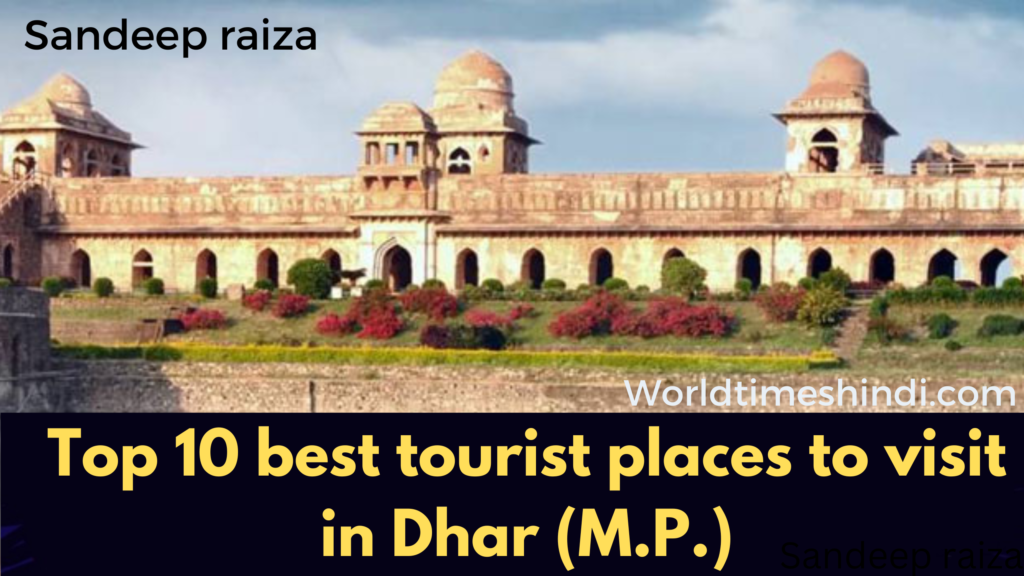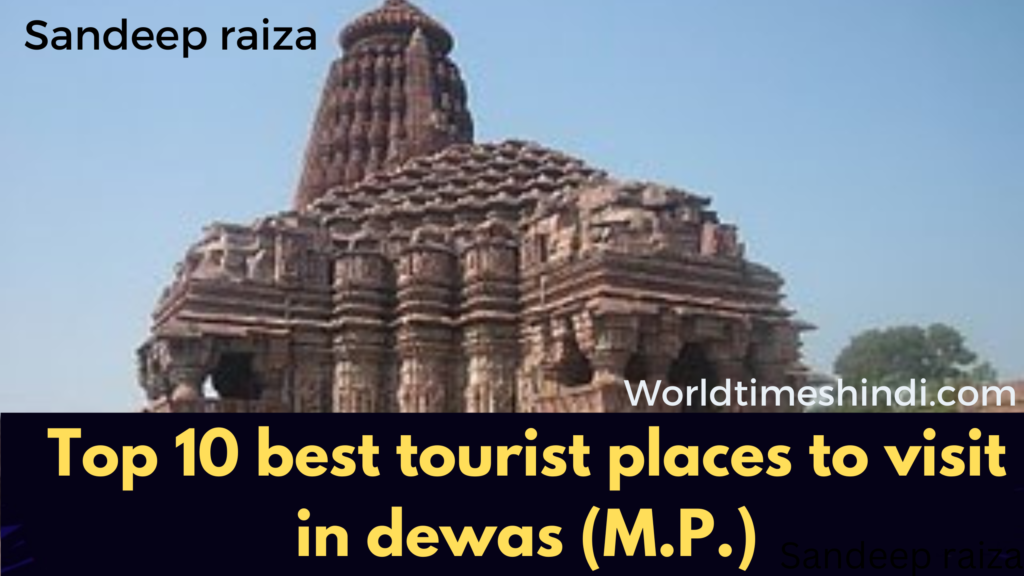History of Bhopal
Bhopal district was carved out of the erstwhile Sehore District of Bhopal division vide M.P.Govt. Notification No.2477/1977/Sa/One/ dated 13th September, 1972.The district derives its name from the district head-quarters town Bhopal which is also the capital of Madhya Pradesh. The etymology of the term Bhopal has been derived from its former name Bhojpal as would be evident form the following extract from the imperial Gazetter of Central India,1908 P.240.
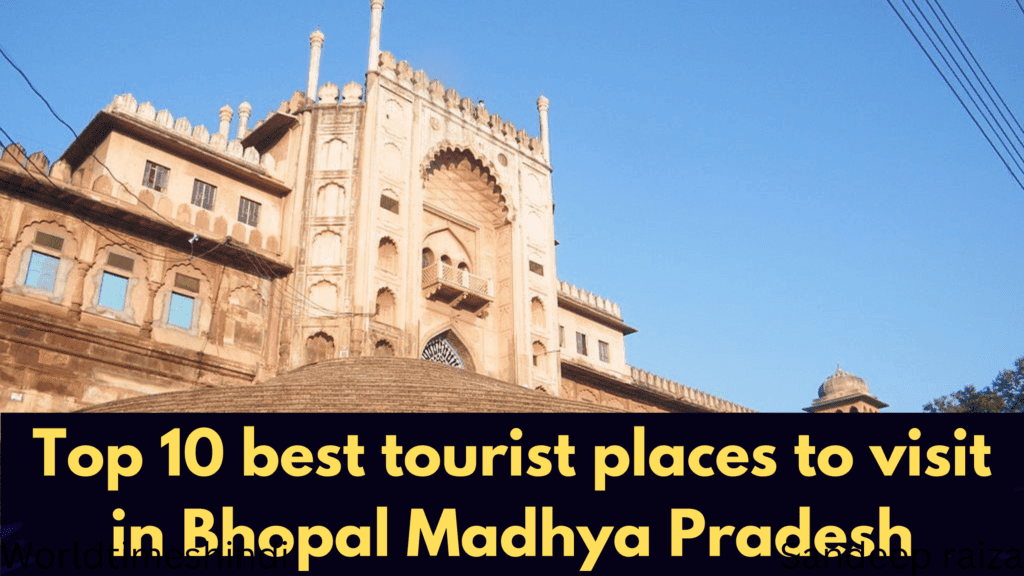
“The name (Bhopal) is popularly derived from Bhojpal or Bhoj’s dam, the great dam which now holds up the Bhopal city lakes, and is said to have been built by a Minister of Raja Bhoj,the Parmar ruler of Dhar. The still greater work which formerly held up the Tal (lake) being attributed to this monarch himself. The name is, however, invariably pronounced, Bhupal and Dr. Fleet considers it to be derived simply from Bhupala, a King, the popular derivation being an instance of the striving after a meaning so common in such cases.”
Initially the lake was quite big but as time has elapsed only a small portion of it has remained to be seen as “Bada Talab” i.e. the upper lake. Since long there is a famous saying about Bhopal lake, “Talon mein tal Bhopal tal, baki sab tallaiya”.
There is a legend that Bhopal, for long, was a part of “Mahakautar” a barrier of dense forests and hills, outlined by the Narmada separating the north, from north to south.Early history of the territory comprising Bhopal district was in oblivion. It was in the tenth century that the names of Rajput clans began to appear in Malwa. The most notable of them was Raja Bhoj who was both a great scholar and a great warrior.After the invasion by Altamash the Mohammadans began to infiltrate into Malwa which included Bhopal as a part. In 1401 Dilawar Khan Ghori took charge of this territory. He made Dhar as the capital of his kingdom. He was succeeded by his son.
In the beginning of 14th century a Gond warrior called Yadoram established the Gond Kingdom with his headquarters at Garha Mandla. The Gond dynasty had a number of powerful kings like Madan Shah, Gorakhdas, Arjundas and Sangram Shah. During the Mughal invasion in Malwa a sizeable area of the territory comprising Bhopal state was under the possession of Gond Kingdom. These territories were known as Chaklas of which Chakla Ginnour was one consisting of 750 villages. Bhopal was a part of it. The Gond king Nizam Shah was the ruler of this area.
Nizam Shah died of poisoning by Chain Shah. His widow, Kamlavati and son Naval Shah became helpless. Naval Shah was a minor then. After the death of Nizam Shah, Rani Kamlavati came to an agreement with Dost Mohammed Khan to manage the affairs of the xvi state. Dost Mohammed Khan was a shrewd and cunning Afghan Sardar who began acquiring smaller principalities. After the death of Rani Kamlavati. Dost Mohammed Khan seized the fort of Ginnor, curbed the rebels, bestowing the grants according to their degree of control upon the rest and earned their gratitude.
By treachery and deceit, destroyed the Deora Rajputs and also slaughtered and drowned them down into a river; which since then is known as Halali, the river of salughters. He shifted his headquarters to Islaminnagar and built a fort. Dost Mohammed died in 1726 at the age of 66. By this time he had carved out the state of Bhopal and placed it on a firm footing. It was Dost Mohammed Khan who had decided to build his capital at Bhopal in 1722. His successor Yar Mohammed Khan however went back to Islamnagar.
Marathas had a contest with Yar Mohammed Khan in which many lives were lost. The Marathas were making inroad to Malwa in 1737, Yar Mohammed Khan tried to make friendship with the Marathas by paying them handsome ransom, requesting however that his territories might not be devastated. Yar Mohammed Khan ruled for fifteen years. He died in 1742 and was buried in Islamnagar where his tomb is still standing.
On the death of Yar Mohammed Khan, his eldest son Faiz Mohammed Khan succeeded him with the assistance of Diwan Bijai Ram. In the mean time Sultan Mohammed Khan, the brother of Yar Mohammed Khan proclained himself as a ruler and obtained possession of Fatehgarh Fort at Bhopal. Again with the help of Bijai Ram, Faiz Mohammed denounced all claims on Bhopal in lieu of some Jagirs elsewhere. Faiz Mohammed Khan attacked Raisen Fort and took possession of it.
It was in 1745, that the Peshwa made inroads in Bhopal territory. He got help from Sultan Mohammed Khan. The Bhopal army was unable to resist the onslaught of Marathas and thus some surrounding areas viz, Ashta, Doraha, Ichhawar, Bhilsa, Shujalpur and Sehore etc. were ceded to them.
Faiz Mohammed Khan died on 12th December, 1777. Since he was childless, his brother Hayat Mohammed Khan succeeded him with the help of lady Mamola, the widow of Yar Mohammed Khan. But the Begum Salaha widow of Faiz Mohammed Khan wished herself to take the command of the state. Rivalries had started brewing and chaotic condition prevailed. To pacify the deteriorating conditions, lady Mamola took active part in making Hayat Mohammed Khan as the deputy of Begam Salaha. This arrangement was discarded by Hayat Mohammed Khan who revolted and assumed the title and power of Nawab.
The East India company had established its footing in India. Colonel Goddard of the East India Company had marched through Bhopal on his way to Bombay. Hayat Mohammed Khan maintained good relations and was faithful to them.
Nawab Faulad Khan was the Diwan but developed the enemity with lady Mamola and was slained by a member of the royal family. Chhota Khan was appointed Diwan in his place. In a fierce fight which took place at Phanda, there was a loss of troops and Chhota Khan lost his life. It is Chhota Khan who had built a stone bridge to dam the lower lake which is still known as “Pul Pukhta”. Ameer Mohammed Khan succeded his father. Since his behaviour was not good he was ousted by the Nawab. Due to internal disturbances Nawab Hayat Mohammed Khan confined himslef to his palace without taking any active part in the affairs of the state. He died on 10th Nov. 1808. After the death of Hayat Mohammed Khan, his son Ghaus Mohammed became the Nawab but he was not so effective. Wazir Mohammed Khan in fact wielded power and tried to influence the Britishers. At this time the Maratha power was being built up.
Nazar Mohammed Khan became his successor and remained in power from 1816 to 1819.On 28th February, 1818, he married Gauhar Begum who was also known Qudsia Begum. By persistent endeavour , he succeeded in entering into a pact with the Britishers. The important provisions of the treaty was that the British Govt. will guarantee and protect the principality of Bhopal against all enemies and will maintain friendship with it. Nazar Mohammed Khan died accidentally on 11th November 1819. On the death of Nazar Mohammed Khan Gohar Begam was vested with the supreme authority in the state by the political agent in Bhopal.
In November 1837, Nawab Jehangir Mohammed Khan was vested with powers of chief of the state. It was Nawab Jehangir Khan who built a new colony which is known as Jehangirabad. His relations with Sikandar Begum became strained after some time. The Begum moved to Islamnagar and gave birth to a daughter who was known as Shah Jahan Begum. Later on Sikandar Begum came to power. On the death of Sikandar Begum, Shah Jahan Begum became ruler of Bhopal with full powers. She did the good work for the welfare of the state. Her Highness earned the approbation of the Governor General for good administrative ability.
On the death of Shah Jahan Begum, her daughter, Sultan Jehan Begum became the ruler. She was married to Ahmed ali Khan who was given the title of “Wazirud Daula”. He died on 4th Jan. 1902 due to heart-attack.
A number of important buildings were constructed during the regime of her Highness,Sultan Jehan Begum. She was a patron of learning. It was during her time, the Sultania Girl’s School and Alexanderia Noble School (Now known as Hamidia High School) were established.
On the occasion of the Prince of Wales’ visit on 4th Feb, 1922. Her Highness announced a new constitution for the Bhopal state which consisted of the establishment of an Executive Council and a Legislative Council. The president of the Council was Her Highness herself.
Nawab Hamidulla Khan assumed the reign in 1926. His Highness was twice elected as the Chancellor of the Chamber of Princes once in 1931-32 and again in 1944-47 and took part in important deliberations affecting the political evolution of the country. With the announcement of the plan of independence of the country the Nawab of Bhopal resigned in 1947 from the Chancellorship of the Chamber of Princes.
In 1947, a new Ministry with a non-official majority was appointed by His Highness, but in 1948 His Highness expressed his desire to retain Bhopal as a separate unit. However, the agreement for merger was signed by the Ruler on April 30, 1949 and the State was taken over by the Union Government through a Chief Commissioner on June 1, 1949.
After the merger, Bhopal State was formed as a part ‘C’ State of Indian Union. Later as a consequence of the Reorganisation of states on linguistic basis on 1st Nov. 1956, Bhopal became the part C State or Madhya Pradesh. The Bhopal district was carved out on 02-10-1972, which continues to be one of the 45 districts of the State. Bhopal state was an independent state of 18th century India, a princely state of India from 1818 to 1947, and an Indian state from 1949 to 1956. Its capital was the Bhopal city.
Quick fact’s about Bhopal
- Total no of village – 614
- Total Area – Area 2,772 Sq. K.M.
- Population – 23,68,145
- Pincode – 462001 to 462050
- Vehicle registration – MP-04
- Official language – Hindi
- The begums gave the city all important things including the postal systems, railways, municipality, and the waterworks.
10 best tourist places to visit in Bhopal
1. Bhimbetka , Bhopal
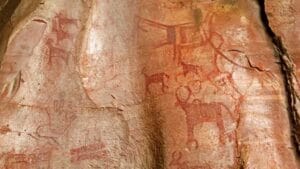
Cave paintings dating back to approximately 30,000 years. Rock shelters that were home to humans, millennia ago. And a rich flora and fauna surrounding these, indeed, make Bhimbetka a gift to us from our earliest ancestors.
Address: Bhojpur Raisen, Madhya Pradesh 464990
2. Taj-ul-Masajid, Bhopal
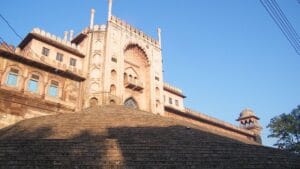
Taj-ul-Masajid is a mosque situated in Bhopal, India. The name is also spelt as Taj-ul-Masjid. “Masajid” means “mosques” (Plural of “masjid”) and “Taj-ul-Masajid” literally means “Crown Among Mosques”. It is the largest mosque in India and one of the largest mosques in Asia’s. Please click to know the more details:
Address: NH 12, Kohefiza, Bhopal, Madhya Pradesh 462001
3. Van Vihar National Park, Bhopal
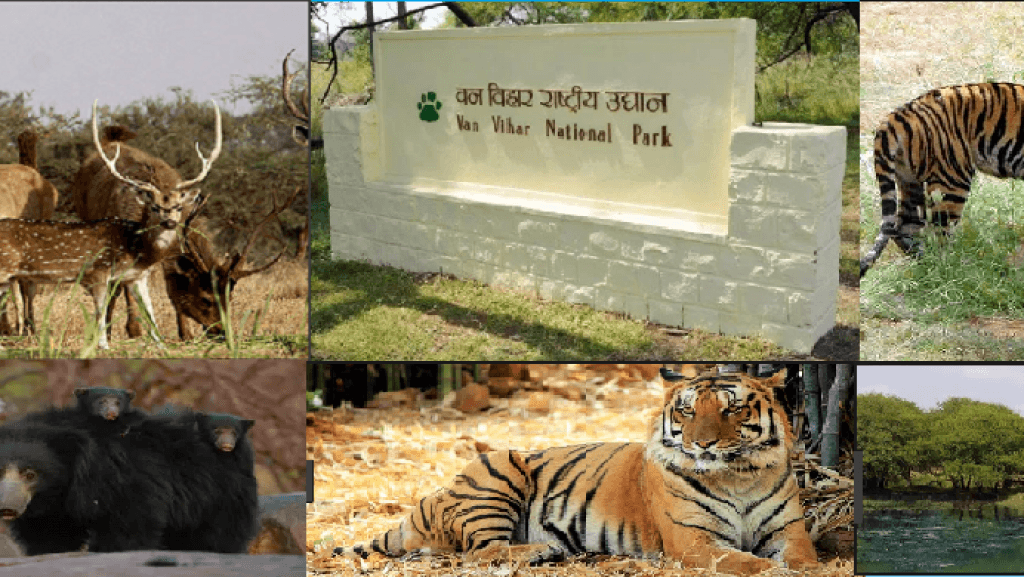
Van Vihar National Park was formed from a depleted forest area. In order to bring back and protect the rich flora& fauna, this unproductive land was declared a National Park in 1981 under the wildlife protection act.
The rich wildlife at Van Vihar!
This open zoological park comprises some huge wire enclosures where the carnivores like tiger, lion, panther, bear, and hyena stay as per the modern theory of the zoo management. On the contrary, the herbivores for instance cheetal and blackbuck are allowed to move around freely. The relentless chirping of a wide range of birds fills the air with vivacity while crocodile and tortoises relax in the sun. Another division which needs a mention here is the reptile unit, where one can see snakes like the cobras, russel vipers and pythons crawling on mud. The Van Vihar Rashtriya Udyan also houses a ginormous variety of butterflies and insects.
Its nearness to the lake, enhances beauty and calmness of the landscape. The lakeside of the park brightens up with the arrival of a troop of migratory birds during winters. The park also has a Rescue Centre which takes care of ill animals. Though open all year round, Van Vihar turns out to be the best place for wildlife enthusiasts especially during monsoons, when the other national parks remain shut.
4. Bhojpuri, Bhopal
The magnificent temple of Bhojpur , which has earned the nomenclature of the Somnath of the East is known as the Bhojeshwar temple. Dating back to the period of Raja Bhoj, The legendary Parmar king of Dhar , the temple is about 1000 years old. This temple to this date attracts devotees of Lord Shiva in huge numbers during the Shivaratri festivities.
Just half – an – Bhojpur Templehour drive from Bhopal, this sanctum has the biggest Shiva Linga carved out of a single stone, rising to an awe-inspiring height of 7.5 feet with a circumference of 17.8 feet. Set upon a massive platform of 21.5 feet, the architectural harmony of lingam and platform creates a superb synthesis of solidity and lightness.
Although the temple was never completed , it still remains one of the best examples of temple architecture of the 12th and 13th centuries.
5. Islam Nagar, Bhopal
It is situated 22 kilometer away from Bhopal. This place was discovered 70 years ago by a jain Muni.Hundred of idols of Jain tearthankars can be seen there.
6. Manua Bhan Ki Tekri, Bhopal
Near seven kilometer away from Bhopal on Gwalior road on the top of a hill is situated Manua Bhan Ki Tekri, the Jain temple, a pilgrimage and faith of jain devotees. On the tekri the Jain saint Maharaj Shri Vijay Suriji, Shri Jindutta Sureshwarji and Acharya Manutung’s footwears are kept and also a idol of Shri Man Bhadarji has been installed. On the Simha Gate of the temple is an old manuscript carved on the stone, the language in which it has been written is still to be deciphered. It is also said to be the Sadhana Sthali of Oswal Dynasty. A big fare is also held every year here on Kartik Purnima.
7. Samassgarh , Bhopal
It is situated 22 kilometer away from Bhopal. This place was discovered 70 years ago by a jain Muni.
8. Birla Mandir , Bhopal
Birla Mandir is situated at the highest point of Bhopal, atop area Hills dedicated to goddess Lakshmi.
9. Fish Aquarium , Bhopal
It is situated near Raj-Bhavan and old assembly hall. It came into existence on in 1977.
10. Shaurya Smarak, Bhopal
Shaurya Smarak is a war memorial situated at Bhopal, inaugurated by the Prime Minister of India Narendra Modi on 14 October 2016. Shaurya Smarak is established by government of Madhya Pradesh at Bhopal in the heart area of Arera Hills near M.P. Nagar. It is sprawled over large area of about 12 acres .
Famous dessert in Bhopal
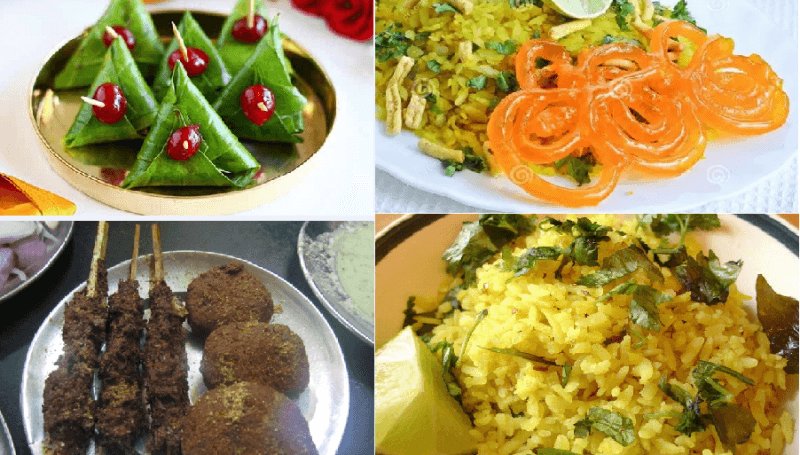
The food offered in city of lakes is a real delight.The food speaks volumes of the ethnic culture that is vibrant here. Famous for its meat dishes – the curries and kebabs are the most acknowledged and preferred dishes here.
The entire old city area can offer you some amazing varieties of snacks. The city of lakes wakes up slow but as the shops open till 7am, the old city area will not disappoint you to have stomach filling breakfast.
Poha- Jalebi
You can start your day with tempting Poha-Jalebi combination. If you are someone who loves to gorge on something sweet, then you can even opt for Rabdi-Jalebi combination that will keep you going until your lunch time. Once you are done with having light snacks you can then head to sipping on ‘Sulemani Chai’, a tea which is sweet and salty served with dollops of cream!
Bhopali Paan
To top it all, there is yet another famous Bhopali Paan which is relished by the locals and visitors alike. This special paan has wide ranging toppings which vary from distinct types of dry fruits to supari. The Paan is almost considered a must have for those who want to give a grand finishing touch to their meal.
How to Reach
By Air
Raja Bhoj Airport is the major airport of Bhopal, located around 15 km from the city center in Bairagarh suburban area on National Highway 12. Bhopal is well connected to the metros other cities by various companies airlines.
By Rail
Bhopal Junction (Station Code : BPL), located near Hamidia Road, is the main railway station of Bhopal that is served by the West Central Railways.Bhopal is on one of the two main Delhi to Mumbai railway lines and also on the main line to the southern state capitals of Chennai, Hyderabad, Bangalore and Thiruvananthpuram. It is is on one of the two major Delhi to Mumbai railway lines. Dakshin Express, Punjab Mail, Goa Express, Tirukkural Express, Jhelum Express, Andaman Express, Kushinagar Express and Jaipur Express are the main trains that passes through the station. It is also the terminus of the Shatabdi Express, which daily shuttles between Delhi and Bhopal.
By Road
There are extensive bus services (private and state) to cities within the region and interstate.
Where we stay Hotel/ resort
MPT Palash Residency
Address: Near 45 Bungalow, T.T. Nagar, Bhopal, Madhya Pradesh, 462003, India Pincode: 462003
Phone:0755-2553006 Email:palash@mpstdc.com
MPT Kerwa Resort, Bhopal
Address: Kerwa Dam, Near Village Medhora, Bhopal, Pincode: 462044
Phone:07552696736 Email:piknik@mpstdc.com
MPT Lake View Residency
Address: Opposite Doordarshan, Shaymla Hills, Bhopal Pincode: 462013
Phone:07552660090 Email:lakeviewashok@gmail.com


